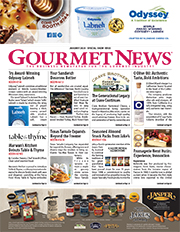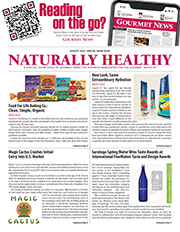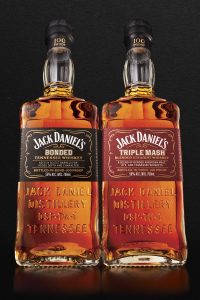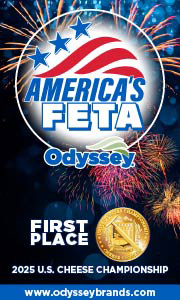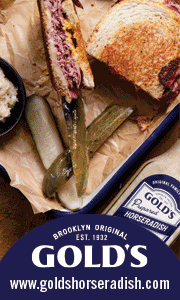USDA Invests $22.5M for Chesapeake Bay Water Quality
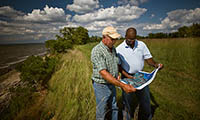 The U.S. Department of Agriculture will invest an additional $22.5 million in conservation assistance in fiscal year 2022 to help farmers boost water quality improvements and conservation in the Chesapeake Bay watershed. The new Chesapeake Bay States’ Partnerships Initiative will support Bay-area farmers, building on a $1.1 billion investment made by USDA’s Natural Resources Conservation Service over the past decade. USDA is also announcing a new task force – jointly with the U.S. Environmental Protection Agency – to better quantify the voluntary conservation efforts of farmers in the Bay watershed.
The U.S. Department of Agriculture will invest an additional $22.5 million in conservation assistance in fiscal year 2022 to help farmers boost water quality improvements and conservation in the Chesapeake Bay watershed. The new Chesapeake Bay States’ Partnerships Initiative will support Bay-area farmers, building on a $1.1 billion investment made by USDA’s Natural Resources Conservation Service over the past decade. USDA is also announcing a new task force – jointly with the U.S. Environmental Protection Agency – to better quantify the voluntary conservation efforts of farmers in the Bay watershed.
“Farmers in the Bay are voluntarily implementing conservation on their farms that is helping to curb sediment and nutrient loss and improve water quality in the Chesapeake Bay watershed,” said Robert Bonnie, under secretary for Farm Production and Conservation. “There is still more work to be done and USDA is committed to continuing to support Bay producers and harnessing the power of partnership to ensure meaningful and lasting improvements for the future.”
“For farmers here in south central Pennsylvania working to reduce nutrient runoff while facing a challenging economy, this USDA investment is a game-changer for developing practices to improve water quality in the Chesapeake Bay Watershed,” said Sen. Bob Casey (D-PA). “Farmers are leading stewards of the land and have a critical understanding of the best way to protect our waterways while simultaneously improving their bottom line.
“Thanks to USDA and the funding I secured in the recently passed spending bill, Pennsylvania farmers will receive increased and targeted conservation assistance, ensuring they prioritize cost-effective practices which restore water quality and improve on-farm resiliency. I’m going to keep working to ensure our state does its part to clean up the Bay, fight the climate crisis and support farmers.”
“I am pleased to celebrate my collaboration with Senator Casey to reduce upstream sources of nutrient loading to the Chesapeake Bay,” ,” said Sen. Ben Cardin (D-MD). “As Maryland’s largest economic sector, agriculture in many ways defines our state. Similarly, best agricultural practices telegraph the health of the Chesapeake Bay. So federal investments that enable the watershed’s farmers to implement conservation measures at scale – and in highly effective, cooperative ways – give us reason to take heart.
“Thanks to the science-driven, regional partnership that has guided us for decades, we have a road map to achieve our restoration goals. These new USDA investments in our farmers will move us significantly forward.”
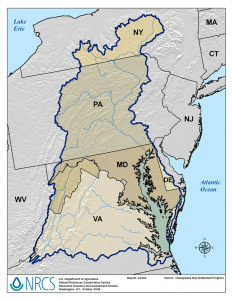 “The Chesapeake Bay is a national treasure and a regional economic engine that every state in the watershed has a responsibility to protect. In order to meet the goals of our Bay Agreement, we need all hands on deck,” said Sen. Chris Van Hollen (D-MD). “That’s why we fought to launch this new partnership which will support the Bay region’s farmers, bolster their conservation efforts, and help get us on track to reach our 2025 goals. Today we’re building on the partnership with the USDA and Bay state lawmakers to establish this regionwide effort that will add more momentum to our charge to protect the Bay for generations to come.”
“The Chesapeake Bay is a national treasure and a regional economic engine that every state in the watershed has a responsibility to protect. In order to meet the goals of our Bay Agreement, we need all hands on deck,” said Sen. Chris Van Hollen (D-MD). “That’s why we fought to launch this new partnership which will support the Bay region’s farmers, bolster their conservation efforts, and help get us on track to reach our 2025 goals. Today we’re building on the partnership with the USDA and Bay state lawmakers to establish this regionwide effort that will add more momentum to our charge to protect the Bay for generations to come.”
This new initiative exemplifies the approach of voluntary, locally led conservation that the Biden administration has prioritized through the America the Beautiful Initiative. The Chesapeake Bay States’ Partnership Initiative will provide a new and innovative framework to leverage USDA conservation financial and technical assistance, locally led conservation, and coordination with state partners.
For fiscal 2022, NRCS is providing $10 million from the Environmental Quality Incentives Program, $10 million from the Agricultural Conservation Easement Program and $2.5 million from the Conservation Stewardship Program.
NRCS will address resource concerns based on a locally led approach and continue to use a targeting process, developed by the NRCS State Technical Committee, to ensure funds are awarded to priority watersheds within the Chesapeake Bay watershed.
Through this Initiative, NRCS will prioritize support of practices that reduce nitrogen and sediment, improve management of livestock and waste, and conserve wetlands, all of which align with the Bay’s water quality objectives to reduce nutrient loading, restore wetlands and install riparian buffers. Practices include riparian buffers, cover crops, waste storage facilities, and prescribed grazing, among others.
This funding will allow states to respond to the high demand from Bay area farmers for additional conservation support, as well as offer new and targeted sign-ups. NRCS will also work with USDA’s Farm Service Agency to identify needs and opportunities for buffer management on acres that may be coming out of the Conservation Reserve Program.
In addition to the establishment of the new initiative and the additional funding for fiscal year 2022, USDA and EPA are establishing a new federal Task Force on Crediting Chesapeake Bay Conservation Investments. The Task Force will work over the next year to identify improvements to more fully credit farmers’ conservation efforts in cooperation with the Bay States and the agricultural community.
“We appreciate USDA’s extensive investments that support agricultural conservation efforts that benefit farmers, local streams, and the Chesapeake Bay, which is in addition to new watershed funding announced by EPA earlier this week from the Bipartisan Infrastructure Law,” said Adam Ortiz, EPA Mid-Atlantic Regional administrator. “EPA and USDA are united in our commitment to give farmers the credit they deserve. Together, we will work with our federal, state, and agricultural partners to find solutions that are supported by the Chesapeake Bay Program partnership’s process and accounting protocols.”
The Task Force will develop an action plan that is responsive to the needs of the Bay states and agricultural community. Solutions will maintain the scientific integrity of the Chesapeake Bay Program partnership’s decision-making process and accounting tools and ensure producer privacy is protected. The Task Force will leverage findings from successful data sharing pilots and look for opportunities to integrate time-saving technologies to identify conservation practice implementation.
Agricultural lands compose nearly 30 percent of the Chesapeake Bay watershed, which includes the District of Columbia and portions of Delaware, Maryland, New York, Pennsylvania, Virginia and West Virginia. This region has more than 83,000 farms responsible for more than $10 billion in agricultural production each year.
NRCS harnesses proven conservation practices and programs to help farmers improve their operations while at the same time improving water quality and conserving natural resources in the Bay watershed.
Between 2018 and 2020, NRCS helped farmers implement conservation on 1.26 million acres in the Bay watershed, which is the size of Grand Canyon National Park.
From 2006 to 2016, farmers in the Bay watershed made significant increases in the adoption of structural practices, conservation tillage, and cover crops that reduced sediment loss, surface losses of nitrogen and phosphorus from cropped fields and increased per acre carbon stored in cropland soils by 69 percent.
Across the Bay from 2006 to 2016:
- Application of edge-of-field practices nearly tripled, from 9.6 percent to 28.3 percent of cropland acres using a riparian buffer, field border, filter strip, or critical area planting.
- Cover crop use increased nearly 11-fold, from 3 percent to 33 percent of acres using cover crops in their crop rotation.
- No till increased by 52 percent and conventional tillage decreased by 61 percent. Conservation tillage of all types were being implemented on 82 percent of acres in the Bay watershed.
Meanwhile, FSA’s Conservation Reserve Enhancement Program, part of CRP, has enabled conservation partners and producers to provide natural resources benefits in Delaware, Maryland, New York, Pennsylvania, Virginia and West Virginia. Currently, more than 155,000 acres are enrolled in buffer, grass, and tree practices designed to improve water quality and wildlife habitat.
CREP highlights include
- In Delaware, one-tenth of all waterways have a CREP conservation buffer.
- In Maryland, acreage enrolled in CREP has annually reduced sediment loading into streams from agricultural lands by more than 28,000 tons in 2021.
- In Pennsylvania, acreage enrolled in CREP has annually reduced sediment loading by more than 38,000 tons in 2021.
- In Virginia, over 1,745 acres have been enrolled in permanent state conservation easements that extend the benefits of CREP since 2004.
To learn more, visit NRCS’ Chesapeake Bay webpage or download fact sheets for CREP, EQIP, ACEP and CSP.
For news that affects the specialty food industry, subscribe to Gourmet News.
Coors Light Energy-Efficient Rooftop Ads Have Chilling Effect
Globally, 2021 was ranked the fifth warmest year on record since 1880, according to the European Union’s Copernicus Climate Change Service. Heat waves are more frequent, and in Miami, there have been more 90-degree days than ever before. Air conditioners are humming non-stop, utility bills are skyrocketing, and overall, it’s just hotter.
 In response, Coors Light has debuted Chillboards, rooftop billboard installations proven to cool buildings down.
In response, Coors Light has debuted Chillboards, rooftop billboard installations proven to cool buildings down.
The minimally branded rooftop installations are located atop apartment buildings in Miami and painted with Mule-Hide Finish reflective white roof coating, a formula proven to reflect 85 percent of sunlight. On one rooftop tested, Coors Light discovered the ad lowered the surface temperature of the roof by as much as 50 degrees. View how it works in this short video.
“The science behind Chillboards is actually pretty simple, dark surfaces absorb sun rays, but specially formulated white coating reflects them, resulting in a cooler temperature,” said Marcelo Pascoa, vice president of marketing for the Coors Family of Brands. “We realize not everyone will be able to paint their roofs white, but we hope to inspire Americans to make choices that reduce energy usage and puts a few dollars back in their pockets.”
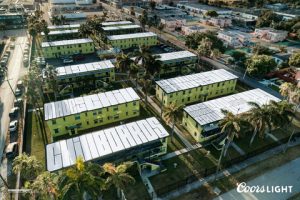 The new rooftop Coors Light ads, which have different phrases such as, “Chillboards” and “Ads Nobody Can See, But Everyone Can Feel,” are written in the typeface “coolest,” designed to cover more than 95 percent of the surface space in reflective white paint.
The new rooftop Coors Light ads, which have different phrases such as, “Chillboards” and “Ads Nobody Can See, But Everyone Can Feel,” are written in the typeface “coolest,” designed to cover more than 95 percent of the surface space in reflective white paint.
“Simple and cost-friendly initiatives like Coors Light Chillboards can have a significant impact on the quality of life for renters and homeowners,” said Jane Gilbert, Miami-Dade chief heat officer. “If more communities started seeing the value of painting roofs white, we could cool down millions worldwide.”
In support of the energy-saving program, Coors Light is giving away 5,000 gallons of roof coating. For more information, visit www.Chillboards.com.
Coors Light worked with Creative Director Set Free Richardson and Street Artist Andulaz The Artist to produce the Chillboards.
In March, Coors Light spearheaded efforts for Molson Coors to move away from six-pack plastic rings by the end of 2025, a move that will eliminate 400,000 pounds of single-use plastic annually. Learn more about Coors Light sustainability agenda.
For more updates on the specialty food industry’s push toward sustainability and corporate responsibility, subscribe to Gourmet News.
Jack Daniel’s Launches First Super Premium Whiskey Line Extension in 25 Years
The Jack Daniel Distillery introduces Jack Daniel’s Bonded Tennessee Whiskey and Jack Daniel’s Triple Mash Blended Straight Whiskey as the first two permanent expressions in the brand’s new Bonded Series. The Bonded Series honors the whiskey making excellence of the iconic Jack Daniel Distillery and will be a permanent extension in the Jack Daniel’s Family of Brands.
Both Jack Daniel’s Bonded and Triple Mash are Bottled-in-Bond at 100 proof (50% abv), with packaging inspired by the original design of the 1895 Jack Daniel’s Tennessee Whiskey bottle. As stipulated by the Bottled in Bond Act of 1897, a bonded whiskey must be distilled by a single distiller during a single season, matured in a government bonded warehouse for at least four years and bottled at 100 proof.
“The Jack Daniel Distillery has been making exceptional American whiskey to the highest standards for generations, before and after the Bottled in Bond Act, dating back to the days of Mr. Jack himself,” said Chris Fletcher, Jack Daniel’s master distiller. “Jack Daniel’s Bonded and Triple Mash are a nod to our heritage with a touch of innovation and craftsmanship. These whiskeys are another opportunity for both our friends and new drinkers to explore and discover everything Jack Daniel’s has to offer.”
Jack Daniel’s Bonded and Triple Mash will be available across the United States \in May with international markets to follow later in 2022. It will initially be available in 700mL bottles for suggested retail prices of $29.99 and $32.99 respectively. They will be available for pre-sale through ReserveBar beginning May 3, including a limited edition Jack Daniel’s gift item while supplies last.
For updates on specialty foods and beverages, subscribe to Gourmet News.

